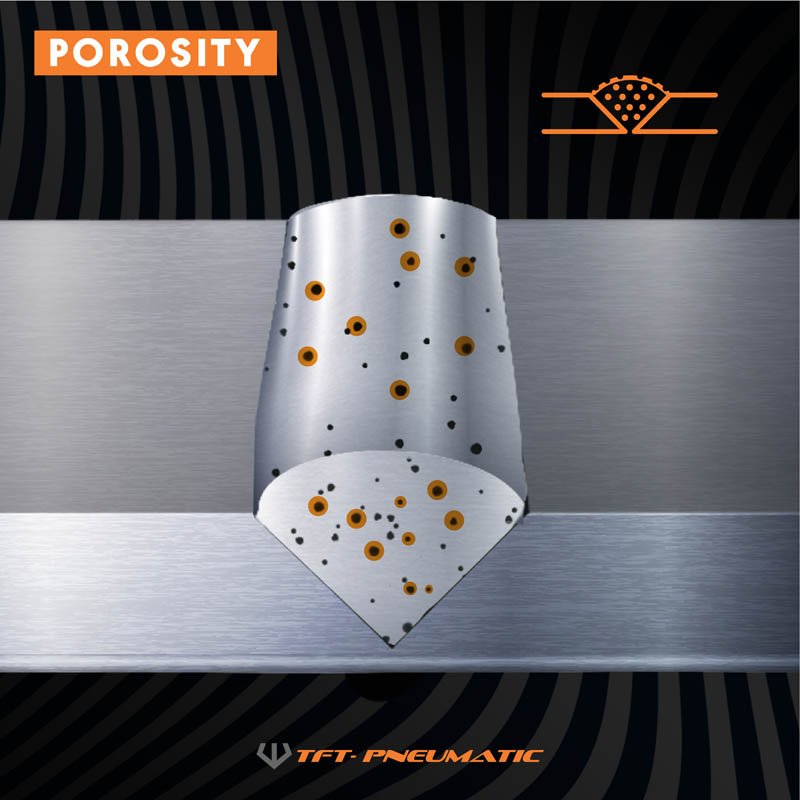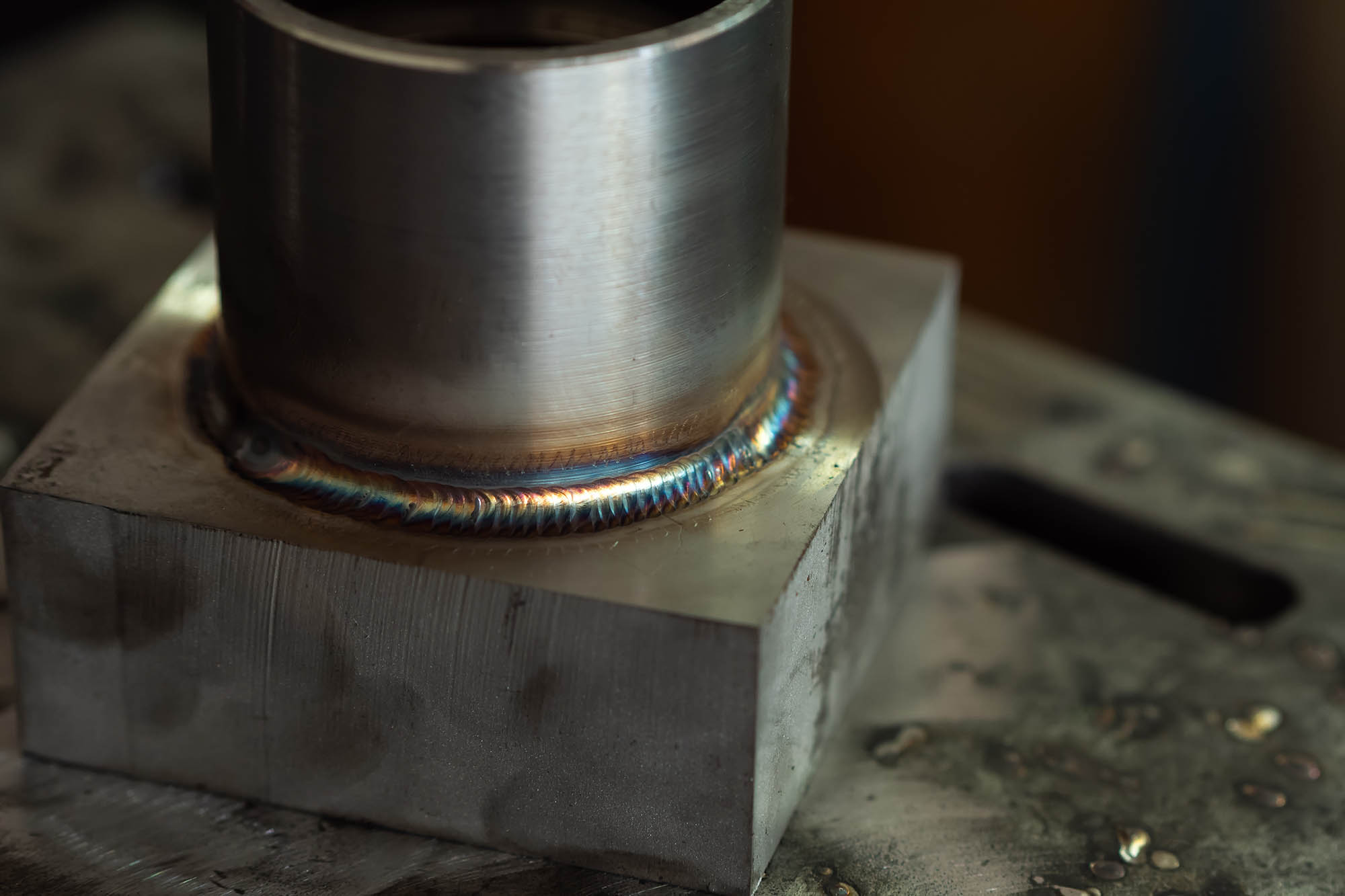Comprehending What is Porosity in Welding: Reasons and Solutions
Wiki Article
Untangling the Secret of Porosity in Welding: Tips for Minimizing Problems and Making The Most Of Quality
In the complex world of welding, porosity remains a relentless difficulty that can substantially influence the top quality and honesty of bonded joints. As we dig right into the depths of porosity in welding, revealing the tricks to its prevention and control will be critical for experts seeking to grasp the art of high-grade weldments.Recognizing Porosity in Welding
Porosity in welding, an usual concern come across by welders, refers to the presence of gas pockets or spaces in the welded material, which can compromise the integrity and quality of the weld. These gas pockets are generally trapped during the welding procedure as a result of numerous aspects such as incorrect protecting gas, polluted base materials, or incorrect welding criteria. The development of porosity can compromise the weld, making it vulnerable to cracking and deterioration, inevitably resulting in structural failings.Comprehending the origin of porosity is critical for welders to properly avoid its occurrence. By recognizing the value of preserving proper gas shielding, making certain the tidiness of base products, and enhancing welding settings, welders can dramatically lower the likelihood of porosity development. Additionally, utilizing methods like preheating the base product, employing appropriate welding methods, and conducting complete evaluations post-welding can better help in minimizing porosity problems. On the whole, an extensive understanding of porosity in welding is important for welders to create high-quality and long lasting welds.

Usual Causes of Porosity
When inspecting welding procedures for potential top quality concerns, comprehending the typical reasons of porosity is necessary for preserving weld honesty and avoiding architectural failings. Porosity, defined by the presence of tooth cavities or voids in the weld steel, can dramatically jeopardize the mechanical residential or commercial properties of a welded joint.
Another widespread reason of porosity is the visibility of moisture and impurities externally of the base metal or filler product. When welding products are not effectively cleaned up or are revealed to high levels of moisture, the evaporation of these pollutants during welding can produce spaces within the weld grain. Additionally, welding at inappropriate parameters, such as excessively high traveling rates or currents, can create too much turbulence in the weld swimming pool, capturing gases and triggering porosity. By attending to these typical causes with appropriate gas shielding, material preparation, and adherence to optimum welding specifications, welders can lessen porosity and improve the quality of their welds.
Strategies for Porosity Prevention
Carrying out effective preventative measures is critical in lessening the incident of porosity in welding processes. One strategy for porosity avoidance is guaranteeing correct cleaning of the base metal prior to welding. Impurities such as oil, grease, corrosion, and paint can lead to porosity, so complete cleaning using appropriate solvents or mechanical techniques is important.
Using top notch filler materials and securing gases that are ideal for the base steel and welding process can significantly reduce the danger of porosity. In addition, keeping appropriate welding parameters, such as voltage, current, travel rate, and gas flow rate, is essential for porosity prevention.
Furthermore, utilizing proper welding strategies, such as browse around this web-site keeping a regular travel rate, electrode angle, and arc length, can aid prevent porosity (What is Porosity). Adequate training of welders to ensure they follow best methods and high quality control treatments is also important in reducing porosity problems in welding

Ideal Practices for High Quality Welds
One trick practice is maintaining proper sanitation in the welding location. Extensively cleaning the work surface and surrounding location prior to welding can help reduce these problems.Another finest technique is to meticulously pick the ideal welding criteria for the particular products being signed up with. This consists of setting the appropriate voltage, present, travel rate, and securing gas flow price. Correct specification selection ensures ideal weld infiltration, blend, and general quality. Additionally, using high-grade welding consumables, such as electrodes and filler steels, can considerably influence the last weld top quality. Buying costs consumables can cause stronger, much more sturdy welds with fewer flaws. By complying with these best methods, welders can consistently create premium welds that satisfy sector requirements and go beyond client expectations.
Significance of Porosity Control
Porosity control plays an essential role in ensuring the honesty and top quality of welding joints. Porosity, characterized by the presence of dental caries or voids within the weld metal, can considerably jeopardize the mechanical properties and structural integrity of the weld. Extreme porosity deteriorates the weld, making it a lot more at risk to cracking, corrosion, and overall failure under functional loads.Effective porosity control is important for maintaining the desired mechanical properties, such as toughness, ductility, and toughness, of the welded joint. What is Porosity. By lessening porosity, welders can boost the general top quality and dependability of the weld, ensuring that it fulfills the efficiency demands of the desired application
Additionally, porosity control is vital for accomplishing the preferred visual look of the weld. Excessive porosity not just weakens the weld however additionally diminishes its visual charm, which can be essential in industries where looks are necessary. Correct porosity control techniques, such as utilizing the right securing gas, controlling the welding parameters, and guaranteeing proper tidiness of the base products, are vital for producing our website top notch welds with minimal issues.

Verdict
In conclusion, porosity in welding is a typical defect that can jeopardize go to website the top quality of the weld. It is vital to regulate porosity in welding to guarantee the stability and toughness of the last item.Report this wiki page